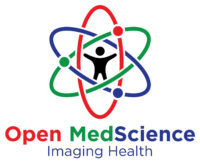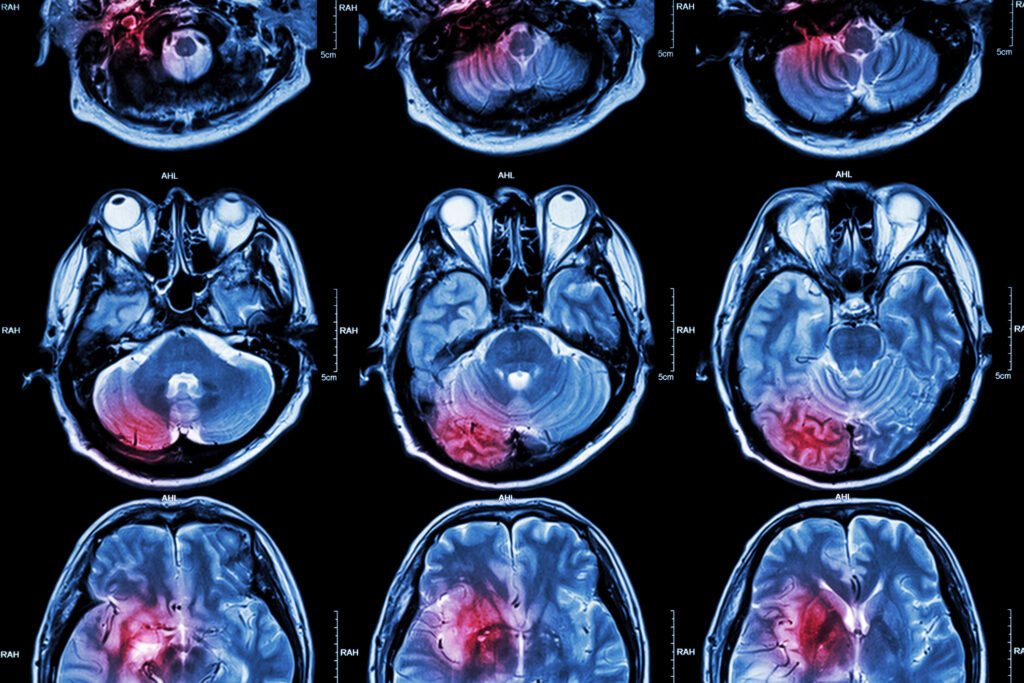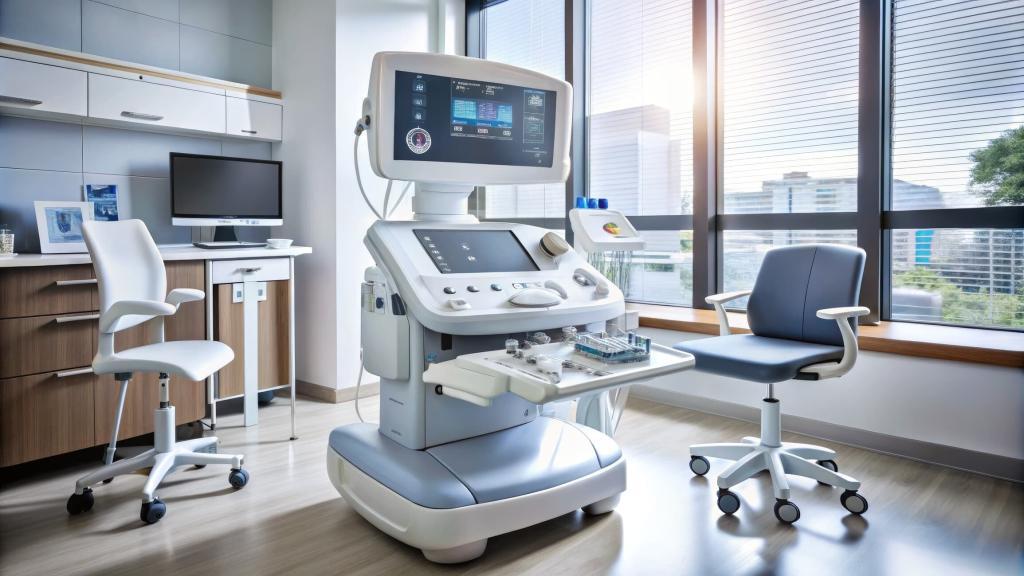Summary: Ultrasound technology has transformed the way we perceive and explore the human body and the surrounding environments. Relying on high-frequency sound waves rather than light, ultrasound provides a unique way to “see” internal structures in real time. From medical diagnostics to non-destructive testing in engineering, ultrasound has evolved into a powerful tool for visualisation and analysis. This article explores the scientific principles underlying ultrasound imaging, its diverse applications, and the potential future applications of ultrasound in both clinical and non-clinical settings.
Keywords: ultrasound imaging, medical diagnostics, echolocation, sound waves, real-time imaging, non-invasive scanning
The Science Behind Ultrasound
Our ability to see is traditionally associated with the detection of light by the eyes. However, sound—particularly ultrasound—offers another, less intuitive route to visualisation. Using frequencies beyond the range of human hearing, ultrasound can paint detailed pictures of the internal world, allowing us to observe without cutting or damaging. This form of imaging is central to a range of applications, most notably in medicine, but increasingly in fields such as marine exploration, industrial testing, and even robotics.
This article explores how ultrasound enables us to “see” the unseen. We will review the science behind ultrasound imaging, discuss its core applications, and look at how this technology is shaping the future.
Ultrasound imaging is based on the principle of sound wave reflection. High-frequency sound waves (typically 2 to 20 MHz in medical contexts) are transmitted into a medium. When these waves encounter a boundary between different tissues or materials, they reflect back to the source. By measuring the time it takes for the echoes to return and their amplitude, it is possible to reconstruct an image of the internal structure.
The device that performs this task is called a transducer, which both emits and receives ultrasound waves. The echoes are processed by a computer and displayed as visual information, usually in shades of grey to indicate tissue density or structure.
Ultrasound imaging offers several advantages:
- It is non-ionising, unlike X-rays or CT scans, making it safer for repeated use.
- It allows real-time monitoring, which is crucial in dynamic assessments such as cardiac or foetal monitoring.
- It is portable and comparatively affordable, increasing accessibility in low-resource settings.
Medical Applications: Seeing Beneath the Skin
Obstetric Imaging
Perhaps the most widely recognised use of ultrasound is in obstetrics. Expectant parents often encounter their first ultrasound during pregnancy. These scans provide essential information about foetal development, heartbeat, and anatomical abnormalities. More advanced 3D and 4D ultrasound techniques enable volumetric imaging and real-time motion capture, providing more detailed views of the foetus.
Cardiology and Vascular Imaging
Ultrasound plays a central role in cardiac diagnostics through echocardiography. This technique allows clinicians to assess heart structure, function, and blood flow. Doppler ultrasound, a specialised form of the technique, measures the direction and speed of blood flow, aiding in the diagnosis of conditions such as valve disorders, congenital heart defects, and arterial blockages.
Abdominal and Musculoskeletal Scans
Abdominal ultrasound can detect issues in various organs, including the liver, kidneys, pancreas, and gallbladder. Similarly, musculoskeletal ultrasound helps visualise muscles, tendons, and joints. It is particularly useful for guiding injections and assessing soft tissue injuries.
Guided Procedures
Ultrasound is frequently used to guide interventions such as biopsies, drainage procedures, and regional anaesthesia. By allowing for real-time visual confirmation of needle placement, ultrasound enhances accuracy and safety.
Beyond Medicine: Industrial and Environmental Applications
Ultrasound’s utility extends well beyond healthcare. Its core ability to detect structures without needing direct access makes it valuable in numerous sectors.
Non-Destructive Testing (NDT)
In engineering and manufacturing, ultrasound is used to assess the integrity of materials without causing damage. For example, ultrasonic testing can detect internal cracks in metal, assess weld quality, or measure thickness in pipelines and aircraft components.
Marine Navigation and Echolocation
Underwater, where light is quickly absorbed and visibility is limited, ultrasound becomes particularly effective. Sonar (Sound Navigation and Ranging) systems employ similar principles to medical ultrasound, enabling submarines to navigate, detect underwater obstacles, or map the seabed.
Cleaning and Material Processing
High-intensity ultrasound is used in industrial cleaning processes to remove contaminants from surfaces or intricate parts. It is also employed in emulsification, degassing, and even in chemical synthesis under specific conditions.
Technological Innovations in Ultrasound
Recent advances are pushing the boundaries of what ultrasound can achieve. Miniaturisation, improved image resolution, and artificial intelligence are key trends.
Portable and Wearable Devices
Handheld ultrasound devices, often no bigger than a smartphone, are now available. These devices connect wirelessly to tablets or phones and provide high-quality imaging at the bedside or in the field. This portability is especially beneficial in emergency settings, rural healthcare, or during pandemics.
3D and 4D Imaging
Three-dimensional ultrasound reconstructs volumetric images, giving a more complete representation of anatomical structures. When updated in real-time (4D), these images facilitate dynamic assessments—for instance, observing heart valves in motion or foetal movement during pregnancy.
AI Integration
Artificial intelligence is being incorporated into ultrasound systems to assist with image interpretation, standardise measurements, and identify abnormalities. This is particularly useful in settings where trained sonographers are scarce.
Therapeutic Ultrasound
While most applications focus on imaging, ultrasound is also used therapeutically. High-intensity focused ultrasound (HIFU) can ablate tumours, treat uterine fibroids, or manage neurological disorders without the need for incisions. It offers a precise and non-invasive alternative to surgery in selected cases.
Seeing Without Sight: Ultrasound and Accessibility
Ultrasound is also being explored as an alternative to visual input for individuals who are blind or have low vision. Experimental devices convert ultrasound data into audio or tactile signals, enabling users to “hear” or “feel” their environment.
For instance, some wearable systems use echolocation principles to detect nearby objects and provide directional feedback. This can enhance navigation and spatial awareness, offering new levels of independence.
Moreover, the role of ultrasound in augmenting robotic perception is significant. Robots equipped with ultrasound sensors can detect obstacles, analyse materials, and even assist in surgery with enhanced spatial understanding.
Ethical, Educational and Practical Considerations
Training and Expertise
Although ultrasound is considered user-friendly, accurate interpretation requires training. Misinterpretation can lead to missed diagnoses or unnecessary interventions. Simulation-based education and structured accreditation pathways are helping to improve competency.
Equity and Access
While ultrasound is more accessible than many other imaging modalities, barriers still exist. Equipment costs, maintenance needs, and lack of trained personnel can limit access in lower-income settings. Initiatives to provide portable devices and remote consultation services aim to address these challenges.
Ethical Use in Emerging Applications
As ultrasound becomes embedded in consumer technologies and everyday tools, ethical questions arise. For instance, should wearable ultrasound be used for constant health monitoring? What are the implications of AI making diagnostic decisions without human input? Clear regulation and responsible innovation will be needed.
The Future of Ultrasound
The future of ultrasound lies in integration and expansion. We can expect:
- Greater use in primary care, offering quick and non-invasive diagnostic support during routine check-ups.
- Fusion imaging, where ultrasound is combined with other imaging modalities like MRI or CT to enhance accuracy.
- Expanded therapeutic applications, particularly in oncology and neurology.
- Remote imaging services, where AI-powered systems guide non-specialists to capture scans that are interpreted elsewhere.
Ultrasound’s versatility, safety, and real-time capabilities position it as a cornerstone of diagnostic and investigative technologies for years to come.
Conclusion
Seeing with ultrasound represents a fundamental shift in how we perceive the internal and often hidden aspects of our world. By converting sound into sight, this technology has enabled advancements in medicine, engineering, navigation, and even personal independence. As innovations continue to make ultrasound more accessible, intelligent, and multifunctional, its role will only become more central to the way we explore and interact with both the human body and the environment around us.
Whether in the hands of a cardiologist, a marine biologist, or a roboticist, ultrasound opens a window where light cannot reach. It enables vision through sound, precise, non-invasive, and increasingly indispensable.
Disclaimer
The content presented in this article is for informational and educational purposes only. While every effort has been made to ensure accuracy, Open Medscience does not guarantee the completeness, reliability, or suitability of the information provided. This article is not intended to replace professional medical, scientific, or technical advice, diagnosis, or treatment. Readers are advised to consult qualified professionals for specific concerns related to healthcare, engineering, or the application of ultrasound technology.
Any mention of specific technologies, devices, or procedures does not constitute an endorsement by Open Medscience. References to emerging uses or future developments are speculative and should be interpreted with caution. Open Medscience accepts no responsibility for any loss, injury, or inconvenience sustained by any person as a result of the information contained in this article.
You are here: home » diagnostic medical imaging blog »



